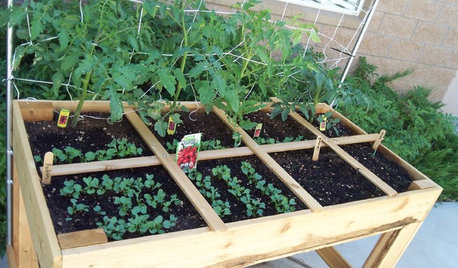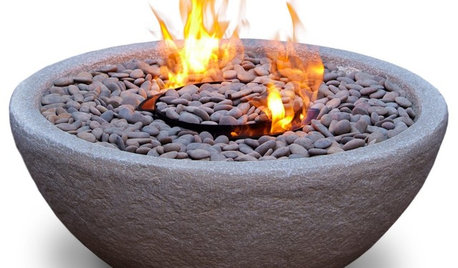How do I harvest?
zzackey
10 years ago
Related Stories

GREEN BUILDINGHow to Harvest Rainwater for Your Garden
Conserve a vital resource and save money by collecting stormwater for irrigation in a barrel or tank
Full Story
DECORATING GUIDESHarvest Farmhouse Style to Freshen a Fall Home
Reap the reward of a wholesome feel when you infuse your home with farmhouse colors, furnishings and accessories
Full Story
GARDENING AND LANDSCAPINGWorld of Design: 10 Home Gardeners Show Us Their Sweet Summer Harvests
From New York to Tokyo, these gardeners have turned their yards, terraces and rooftops into places of bounty
Full Story
GARDENING GUIDESMaximize Harvests With Square-Foot Gardening
This efficient edible-gardening technique can help people who are short on space
Full Story
URBAN GARDENSHarvest the Bounty of a Patio Garden
Make the most of small spaces on decks and balconies to enjoy your pick of vegetables, fruits and herbs
Full Story
GARDENING GUIDESHow I Learned to Be an Imperfect Gardener
Letting go can lead to a deeper level of gardening and a richer relationship with the landscape. Here's how one nature lover did it
Full Story
EDIBLE GARDENSHouzz Call: What Did You Grow This Summer?
Let’s celebrate the homegrown fruits and vegetables of the season. Post your pictures and tell us about your harvest
Full Story
WINTER GARDENINGExtend Your Growing Season With a Cold Frame in the Garden
If the sun's shining, it might be time to sow seeds under glass to transplant or harvest
Full Story
PRODUCT PICKSGuest Picks: Get Comfy-Cozy This Fall
Settle into autumn with decor and accessories in harvest hues or snuggly textures — or that'll warm you up in other ways
Full Story
CALIFORNIA GARDENINGCalifornia Gardener's July Checklist
Bite into tree-fresh apricots, inhale delightful garden perfumes and continue planting vegetables for a late-summer harvest
Full Story





equinoxequinox
Jasdip
Related Professionals
Foothill Ranch Landscape Architects & Landscape Designers · Brookfield Landscape Contractors · Choctaw Landscape Contractors · Cockeysville Landscape Contractors · East Chicago Landscape Contractors · Fairview Landscape Contractors · Fort Myers Landscape Contractors · Lemay Landscape Contractors · North Chicago Landscape Contractors · Pacifica Landscape Contractors · Vermilion Landscape Contractors · Weymouth Landscape Contractors · Hawaiian Gardens Landscape Contractors · Coronado General Contractors · La Grange Park General ContractorsNiivek
hummersteve
pskvorc
MaryAnn1950
Niivek
MaryAnn1950
Jasdip
paul_30068